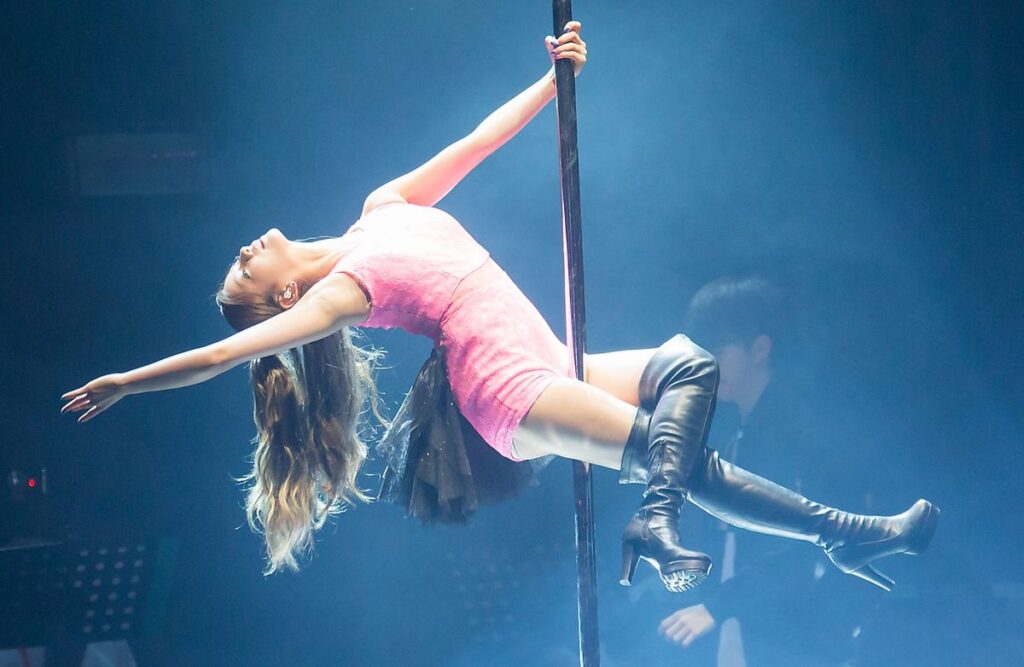The allure of the stripper pole is undeniable. It’s a symbol of sensuality, strength, and artistry all rolled into one. While its origins may be rooted in the world of exotic dance, the stripper pole has transcended its niche and found its way into mainstream fitness and entertainment. In this comprehensive guide, we’ll delve into the history, mechanics, and cultural significance of the stripper pole, exploring its evolution from taboo to trend.
A Brief History
The origins of pole dancing can be traced back centuries, with roots in traditional Indian Mallakhamb and Chinese pole acrobatics. These ancient practices involved performing gravity-defying feats on vertical poles, showcasing strength, agility, and balance.
However, it wasn’t until the 20th century that pole dancing began to take shape in its modern form. In the 1950s, traveling carnivals and circuses featured pole dancing as part of their risqué entertainment lineup. It wasn’t long before the art form found its way into strip clubs, where it became synonymous with exotic dance performances.
Throughout the latter half of the 20th century, pole dancing gained popularity in underground subcultures and adult entertainment venues. It wasn’t until the early 2000s that pole dancing started to gain mainstream recognition, thanks in part to its portrayal in popular media and its emergence as a fitness trend.
The Mechanics of the Stripper Pole
At its core, the stripper pole is a vertical metal pole typically made of stainless steel or chrome-plated steel. It is typically between 8 and 10 feet in height, although variations exist to accommodate different ceiling heights and performance spaces.
The pole itself is anchored to the floor and ceiling using tension mounts or secured with a base plate. The surface of the pole is smooth and polished to reduce friction, allowing performers to execute spins, slides, and other acrobatic maneuvers with ease.
In recent years, advancements in pole design have led to the development of spinning poles, which feature a rotating mechanism that allows the pole to spin independently of the base. This innovation adds an extra dimension to pole dancing routines, enabling performers to incorporate dynamic spinning movements into their performances.
The Artistry of Pole Dancing
Pole dancing is more than just a physical feat; it’s also a form of artistic expression. Performers combine elements of dance, gymnastics, and acrobatics to create captivating routines that showcase strength, flexibility, and grace.
From sensual slow movements to high-energy spins and flips, pole dancing offers endless possibilities for creative expression. Performers often incorporate props such as feather boas, scarves, and high heels into their routines, adding visual flair and enhancing the overall performance.
In addition to its artistic value, pole dancing also serves as a form of empowerment for many individuals. It provides a platform for self-expression and body positivity, challenging conventional beauty standards and celebrating the beauty of diversity.
The Rise of Pole Fitness
In recent years, pole dancing has undergone a transformation from taboo to trend, thanks in part to its emergence as a popular fitness activity. Pole fitness classes have sprung up in gyms and studios around the world, attracting participants of all ages, genders, and fitness levels.
Pole fitness offers a full-body workout that targets strength, flexibility, and endurance. Participants learn a variety of pole tricks and spins, as well as floorwork and dance routines, in a supportive and non-judgmental environment.
Beyond its physical benefits, pole fitness also fosters a sense of community and camaraderie among participants. Many practitioners find empowerment and confidence through pole dancing, as they challenge themselves to push past their limits and embrace their bodies in new and empowering ways.
The Cultural Impact of Pole Dancing
Despite its growing popularity, pole dancing continues to face stigma and misconceptions, largely due to its association with strip clubs and adult entertainment. However, proponents of pole dancing argue that it is a legitimate form of artistic expression and physical activity that should be celebrated and respected.
In recent years, pole dancing has gained recognition as a competitive sport, with organized competitions held around the world. These events showcase the skill and athleticism of pole dancers and help to legitimize the art form in the eyes of the public.
Furthermore, pole dancing has inspired a burgeoning industry of polewear and accessories, including specialized clothing, grip aids, and instructional DVDs. This industry caters to both professional performers and recreational enthusiasts, providing them with the tools and resources they need to excel in their craft.
Conclusion
The stripper pole may have humble beginnings in the world of exotic dance, but it has evolved into a versatile and dynamic form of artistic expression and physical fitness. From its ancient roots in traditional pole acrobatics to its modern incarnation as a mainstream trend, pole dancing continues to captivate and inspire people around the world.
Whether you’re a professional performer, a fitness enthusiast, or simply curious about the world of pole dancing, there’s no denying the allure and appeal of the stripper pole. So why not give it a try? You might just discover a new passion and unlock your inner strength and sensuality in the process.







